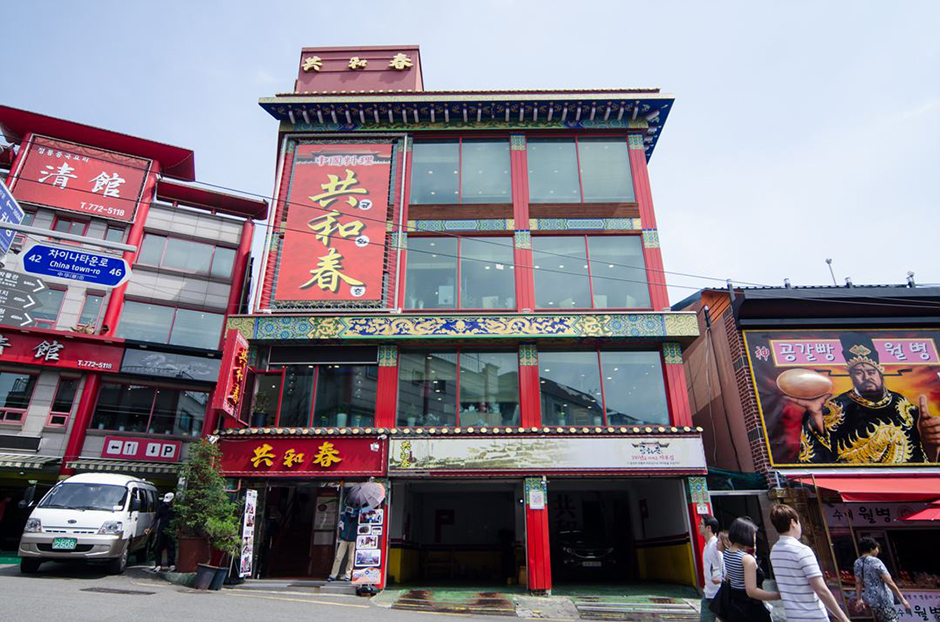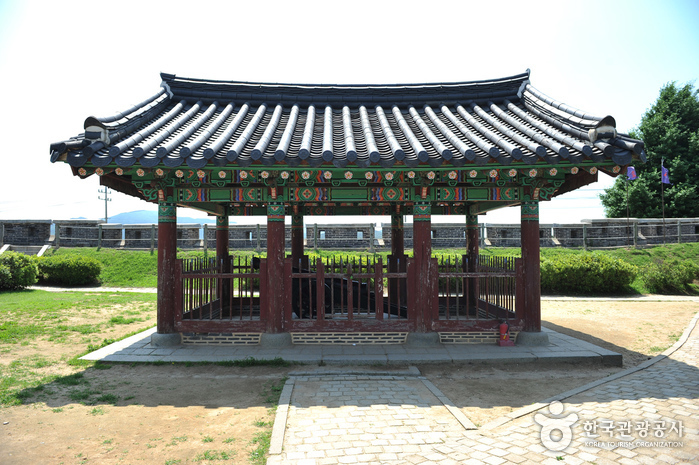Jemulpo Club (제물포구락부)
14.9Km 2024-12-24
25 Jayugongwonnam-ro, Jung-gu, Incheon
+82-32-765-0261
Jemulpo Club, also called Jeumulpo Gurakbu, was established in 1901 to be used as the venue for foreigners such as American, English, German, French, Russian and a small minority of Chinese and Japanese all living in Incheon to build up friendships before opening the port. The two-story brick building was comprised of a library room, pool table, tennis court and others facilities.
The site was used as Incheon Museum from 1953 to 1990 and Incheon Cultural Center from 1990 to 2006. In 2007, the name was changed to Jemulpo Gurabu, imphasizing the Japanese pronunciation of "club." It now offers a site for experiencing modern culture interactions.
The Story Course of the Historical and Cultural Street of the Open Trade Port - 1 hr course ([인천 개항 누리길] 1시간 코스)
14.9Km 2023-01-12
269, Jemullyang-ro, Jung-gu, Incheon
+82-32-440-4055
The Story Course of the Historical and Cultural Street of the Open Trade Port is a course that showcases the history and culture of the pork opening over 100 years ago. Started in 2006, the walking course takes participants through historical buildings and attractions including Jayu Park, The first Bank, 5.8 Bank, Chinatown and more. There are three different courses varying by time with one hour course taking participants from Incheon Station to Chinatown and Samgukji Mural Street, Jayu Park, Jemulpo Club, Incheon Modern Architecture Museum, and finishing at Korean-Chinese Cultural Center.
Descente - Incheon Guwol Branch [Tax Refund Shop] (데상트 인천구월)
14.9Km 2024-04-22
1F, 49, Gaehang-ro, Jung-gu, Incheon
-
MLB - Sinpo Munhwa Branch [Tax Refund Shop] (MLB 신포문화)
14.9Km 2024-04-22
1F, 47-1, Gaehang-ro, Jung-gu, Incheon
-
Gonghwachun (공화춘)
14.9Km 2024-01-04
43 Chinatown-ro, Jung-gu, Incheon
Gonghwachun, one of the Chinese restaurants in Chinatown, opened in 1905 and is famous as the birthplace of jjajangmyeon. The original Gonghwachun building is currently used as Jjajangmyeon Museum, and the current Gonghwachun main branch operates in a building that was founded in 2004. Among the various menus, Gonghwachun Jjajangmyeon is a must-try. This signature menu serves the noodles and the black bean sauce separately. The sauce contains a various ingredients cut in large bite-sized pieces, making it even more delicious. It also offers various course menu options, including lunch, couple, and family courses.
Fila - Sinpo Branch [Tax Refund Shop] (휠라 신포점)
15.0Km 2024-04-22
48-2, Gaehang-ro, Jung-gu, Incheon
-
Ganghwa Chojijin Fortress (강화 초지진)
15.0Km 2021-02-10
58, Haeandong-ro, Ganghwa-gun, Incheon
+82-32-930-7072
Chojijin Fortress is believed to have been built in 1655 (6th year of King Hyojong) for the purpose of national defense against coastal attacks from foreign enemies based on articles regarding the construction of Chojijin Fortress. The fortress was the scene of many hard-fought battles including the invasions of America and Japan in the 1870s. The site was then taken by the foreign troops due to the inferior fighting power of the Korean military, and very nearly completely destroyed. In 1876 (13th year of King Gojong), the Japanese warship Unyangho invaded and forced the Joseon Kingdom to open their ports, which later led to the forced signing of the Jana-Korea Treaty of 1876. Only the base of the fortress and the site of the high ground remained until 1973, when restoration work was started. The patriotic spirit of the Joseon dynasty still remains in this historic site.
LG Best Shop - Gangseo Branch [Tax Refund Shop] (엘지베스트샵 강서점)
15.0Km 2024-04-18
431, Gonghang-daero, Gangseo-gu, Seoul
-
Wolmi Sea Train (월미바다열차)
15.0Km 2024-04-21
269 Jemullyang-ro, Jung-gu, Incheon
Wolmi Sea Train is Korea's longest urban tourist monorail, stretching over 6.1 kilometers. The train travels at an average speed of 9 kilometers per hour, taking 42 minutes to complete one loop around Wolmido. The tracks are located between 7 and 18 meters off the ground, offering a view over all Wolmido has to offer. The views out over the sea are especially beautiful at sunset.
Discovery - Sinpo Munhwa Branch [Tax Refund Shop] (디스커버리 신포문화)
15.0Km 2024-04-17
39, Gaehang-ro, Jung-gu, Incheon
-

![Descente - Incheon Guwol Branch [Tax Refund Shop] (데상트 인천구월)](http://tong.visitkorea.or.kr/cms/resource/69/2882769_image2_1.jpg)


![LG Best Shop - Gangseo Branch [Tax Refund Shop] (엘지베스트샵 강서점)](http://tong.visitkorea.or.kr/cms/resource/94/2880094_image2_1.jpg)
![Discovery - Sinpo Munhwa Branch [Tax Refund Shop] (디스커버리 신포문화)](http://tong.visitkorea.or.kr/cms/resource/68/2882768_image2_1.jpg)
 English
English
 한국어
한국어 日本語
日本語 中文(简体)
中文(简体) Deutsch
Deutsch Français
Français Español
Español Русский
Русский